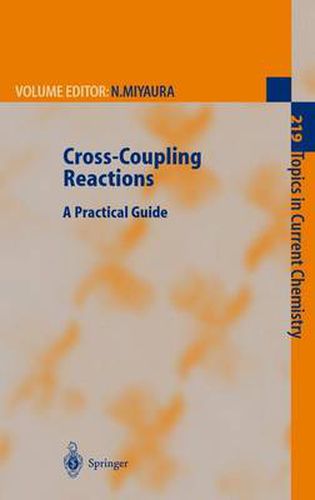Readings Newsletter
Become a Readings Member to make your shopping experience even easier.
Sign in or sign up for free!
You’re not far away from qualifying for FREE standard shipping within Australia
You’ve qualified for FREE standard shipping within Australia
The cart is loading…






This title is printed to order. This book may have been self-published. If so, we cannot guarantee the quality of the content. In the main most books will have gone through the editing process however some may not. We therefore suggest that you be aware of this before ordering this book. If in doubt check either the author or publisher’s details as we are unable to accept any returns unless they are faulty. Please contact us if you have any questions.
In 1972, a very powerful catalytic cycle for carbon-carbon bond formation was 2 first discovered by the coupling reaction of Grignard reagents at the sp -carbon. Over the past 30 years, the protocol has been substantially improved and expanded to other coupling reactions of Li,B,N,O,Al,Si,P,S,Cu,Mn,Zn,In,Sn, and Hg compounds. These reactions provided an indispensable and simple methodology for preparative organic chemists. Due to the simplicity and rel- bility in the carbon-carbon, carbon-heteroatom, and carbon-metalloid bo- formations,as well as high efficiency of the catalytic process,the reactions have been widely employed by organic chemists in various fields. Application of the protocol ranges from various syntheses of complex natural products to the preparation of biologically relevant molecules including drugs, and of sup- molecules, and to functional materials. The reactions on solid surfaces allow robot synthesis and combinatorial synthesis. Now, many organic chemists do not hesitate to use transition metal complexes for the transformation of org- ic molecules. Indeed, innumerable organic syntheses have been realized by the catalyzed reactions of transition metal complexes that are not achievable by t- ditional synthetic methods. Among these, the metal-catalyzed cross-coupling reactions have undoubtedly contributed greatly to the development of such a new area of metal-catalyzed organic syntheses . An excellent monograph for the cross-coupling reactions and other met- catalyzed C-C bond-forming reactions recently appeared in Metal-catalyzed Cross-coupling Reactions (Wiley-VCH,1998).
$9.00 standard shipping within Australia
FREE standard shipping within Australia for orders over $100.00
Express & International shipping calculated at checkout
This title is printed to order. This book may have been self-published. If so, we cannot guarantee the quality of the content. In the main most books will have gone through the editing process however some may not. We therefore suggest that you be aware of this before ordering this book. If in doubt check either the author or publisher’s details as we are unable to accept any returns unless they are faulty. Please contact us if you have any questions.
In 1972, a very powerful catalytic cycle for carbon-carbon bond formation was 2 first discovered by the coupling reaction of Grignard reagents at the sp -carbon. Over the past 30 years, the protocol has been substantially improved and expanded to other coupling reactions of Li,B,N,O,Al,Si,P,S,Cu,Mn,Zn,In,Sn, and Hg compounds. These reactions provided an indispensable and simple methodology for preparative organic chemists. Due to the simplicity and rel- bility in the carbon-carbon, carbon-heteroatom, and carbon-metalloid bo- formations,as well as high efficiency of the catalytic process,the reactions have been widely employed by organic chemists in various fields. Application of the protocol ranges from various syntheses of complex natural products to the preparation of biologically relevant molecules including drugs, and of sup- molecules, and to functional materials. The reactions on solid surfaces allow robot synthesis and combinatorial synthesis. Now, many organic chemists do not hesitate to use transition metal complexes for the transformation of org- ic molecules. Indeed, innumerable organic syntheses have been realized by the catalyzed reactions of transition metal complexes that are not achievable by t- ditional synthetic methods. Among these, the metal-catalyzed cross-coupling reactions have undoubtedly contributed greatly to the development of such a new area of metal-catalyzed organic syntheses . An excellent monograph for the cross-coupling reactions and other met- catalyzed C-C bond-forming reactions recently appeared in Metal-catalyzed Cross-coupling Reactions (Wiley-VCH,1998).